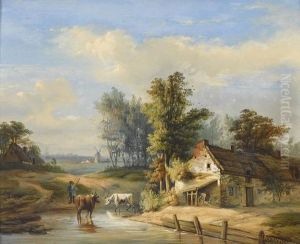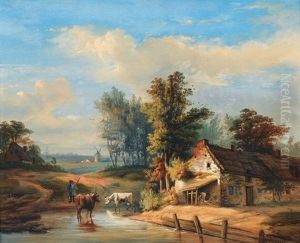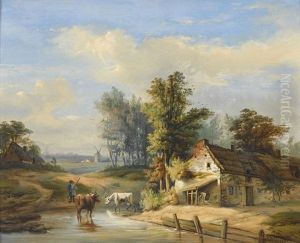Auguste Delfosse Paintings
Auguste Delfosse was a Belgian artist born in 1869 in Liège, Belgium. He is primarily known for his work as a painter, although detailed information about his life and work is relatively sparse compared to more widely studied artists. Delfosse's art was influenced by the academic traditions of his time, which emphasized classical techniques and subject matter.
Delfosse's training and artistic education remain somewhat obscure, but like many artists of his era, he would have been exposed to the academic style prevalent in European art schools during the late 19th century. This style was characterized by its focus on drawing, attention to detail, and often historical or mythological themes. He would have also experienced the transition into modern art movements such as Impressionism and Post-Impressionism, which began to challenge the traditional academic norms.
Throughout his career, Delfosse developed a body of work that included portraits, landscapes, and genre scenes. His style was often realistic, with a strong sense of color and composition. Although he never gained the same level of fame as some of his contemporaries, his work was appreciated for its craftsmanship and adherence to the aesthetic values of his time.
Auguste Delfosse's contributions to the art world were part of the rich tapestry of Belgian art in the late 19th and early 20th centuries. He was part of a cultural milieu that sought to define Belgian national identity through the arts during a period of significant change and modernization. Delfosse passed away in 1931, leaving behind a legacy that, while not widely recognized internationally, remains a part of Belgium's artistic heritage.


